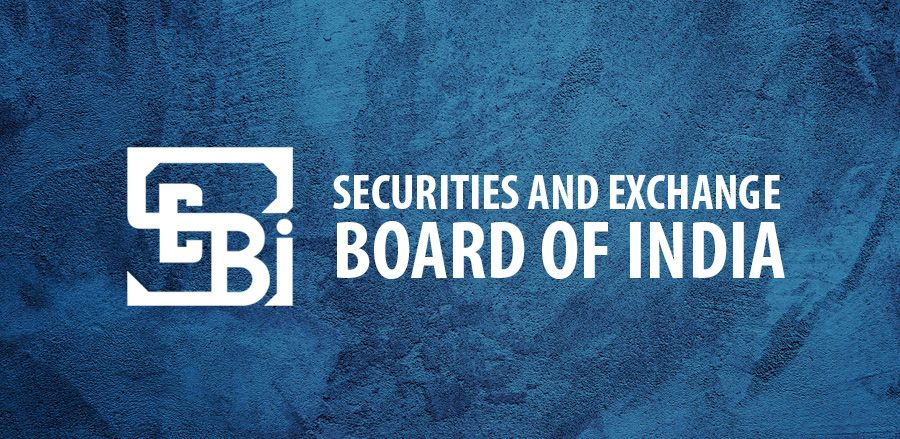The Securities and Exchange Board of India (SEBI) stands as a cornerstone of the integrity and efficiency of the Indian financial system. By ensuring that India’s securities markets remain well-regulated, transparent, and vibrant, it plays a crucial role in safeguarding investors’ confidence in the nation’s economy. This article of NEXT IAS aims to study in detail the Securities and Exchange Board of India, its evolution, structure, powers & functions, associated issues, and other related aspects.

About Securities and Exchange Board of India (SEBI)
- The Securities and Exchange Board of India (SEBI) is the principal regulator of the securities market in India.
- It functions as a statutory body under the Ministry of Finance, Government of India.
Objectives of SEBI
The primary objectives of Securities and Exchange Board of India are as follows:
- To act as the watchdog of the Indian capital market
- To protect the interests of investors in securities, and
- To promote and regulate the securities market.
| – The Headquarters of SEBI is located in Mumbai. – It also has 4 regional offices, located in Ahmedabad, Kolkata, Chennai, and Delhi. |
Evolution of Securities and Exchange Board of India
- Before SEBI came into existence, the Controller of Capital Issues was the regulatory authority of the Indian Securities Market.
- It derived authority from the Capital Issues (Control) Act, 1947.
- With the LPG reforms on the anvil, a need was felt in the late 1980s to have an independent body as a vigilant regulatory authority to protect the Indian financial system from external shocks.
- Accordingly, in April 1988, the Securities and Exchange Board of India was constituted as the regulator of capital markets in India through an Executive Resolution of the Government of India.
- Thus, initially, the it worked as a non-statutory body, without any statutory power.
- Later, with the enactment of the Securities and Exchange Board of India Act, 1992, it became an autonomous and statutory body.
Organizational Structure of SEBI
- The Securities and Exchange Board of India follows a corporate structure with a well-defined hierarchy.
- The Board of Directors sits at the top of the hierarchy and is responsible for the overall direction and management of the operations.
- Its Board of Directors comprises 9 members, including:
- A Chairperson nominated by the Government of India.
- 2 members from the Union Ministry dealing with finance & administration of the Companies Act, 2013 (usually, the Union Ministry of Finance).
- 1 member from the Reserve Bank of India (RBI).
- 5 other members appointed by the Government of India.
- Of these 5, at least 3 shall be the Whole-Time Members.
Powers of SEBI
Securities and Exchange Board of India is a quasi-legislative and quasi-judicial body that can draft regulations, conduct inquiries, pass rulings, and impose penalties. Its powers w.r.t. various players in the securities market can be seen as follows:
Powers w.r.t. Issuers
- Calling for information, undertaking inspection, conducting inquiries and audits of the stock exchanges, mutual funds, other persons associated with the securities market, intermediaries, and self-regulatory organizations in the securities market;
- Prohibiting insider trading in securities.
Powers w.r.t. Investors
- Promoting and regulating self-regulatory organizations;
- Prohibiting fraudulent and unfair trade practices relating to securities markets;
- Regulating substantial acquisition of shares and takeover of companies;
- Promoting investors‘ education and training of intermediaries of securities markets.
Powers w.r.t. Intermediaries
- Registering and regulating the working of stock brokers, sub-brokers, share transfer agents, bankers to an issue, trustees of trust deeds, registrars to an issue, merchant bankers, underwriters, portfolio managers, investment advisers, and such other intermediaries who may be associated with securities markets in any manner.
- Registering and regulating the working of venture capital funds and collective investment schemes, including mutual funds.
Roles and Functions of SEBI
Market Regulation
- As the watchdog for the Indian Capital Market, it prescribes the conditions for issuer companies to raise capital from the public so as to protect the interest of the investors.
- The extensive disclosures prescribed for issuers facilitate informed investment decision-making by investors along with ensuring the quality of the issuer.
Market Development
- It takes measures to widen and deepen the securities markets by bringing changes in the micro and macro structures of the market.
- Some of the major market development measures undertaken by SEBI include – a transparent screen-based online trading system, shifting to electronic mode (demat), robust risk management framework, etc.
Enforcement of Regulatory Norms
- It ascertains compliance with its norms by carrying out inspections of registered intermediaries, and investigations
- It is vested with the power of civil court to call for information and records, to issue summons, to inspect, and to investigate entities associated with securities markets.
- It is also empowered to launch criminal proceedings against entities for breach of norms.
Investors’ Protection
- It facilitates the redressal of investors’ grievances.
- In keeping with its belief that an informed investor is a protected investor, it promotes education and awareness of investors.
- It provides mechanisms for dispute redressal (arbitration at stock exchanges) and to compensate investors.
Major Achievements of SEBI
Since its establishment, it has ensured a well-functioning securities market in India along with driving its development. Some of its major achievements can be seen as follows:
- Dematerialization of shares
- Shortening settlement cycles
- Initiating nationwide electronic trading
- Introducing risk management systems
- Establishing clearing corporations
- Nurturing the mutual fund industry.
Issues Associated with SEBI
- Excessive focus on the regulation of market conduct and a lesser emphasis on prudential regulation.
- As compared to its counterparts in the US and the UK, it has been given much greater legislative as well as enforcement powers.
- It is empowered to impose serious restraints on economic activity just on the basis of suspicion, which, at times, leads to serious economic injury.
- The component of prior consultation with the market and a system of review of regulations to see if they have met the articulated purpose is substantially missing. As a result, the fear of the regulator is widespread.
- Rules as well as enforcement of regulations are inadequate, particularly in areas like insider trading.
Initiatives Taken for Effective Functioning of SEBI
Investor Education and Protection Fund (IEPF)
IEPF has been established under Section 125 of the Companies Act, 2013 for the promotion of investor’s awareness and protection of the interests of investors.
SCORES Portal (SEBI Complaints Redress System)
- It has established the SCORES portal, a web-based centralized grievance redress system.
- It enables investors to lodge and follow up on their complaints and track the status of redressal of such complaints from anywhere.
Investor Education and Financial Literacy
- It has taken several initiatives for Investor Education and Financial Literacy. This, in turn, enables better operation of markets and economy as well as protection of investors’ interests.
- Some of the major initiatives taken in this direction include – Securities Market Awareness Campaign, Financial Literacy – cum – Counselling Centre, etc.
Way Ahead
- There is a need for an attitudinal change in order to shift the current focus from the regulation of market conduct to prudential regulation.
- In this regard, its foremost objective should be cleaning up the policy space in the financial market.
- Emphasis should be put on continuous monitoring and improving market intelligence to strengthen market regulations.
- Instead of just using the volume of funds raised as a parameter for success, the SEBI needs deep review and research as to what can be done better.
- In order to strengthen its human resources, lateral entry can be considered to draw the best talent.
- With Indian financial markets still being segmented, one regulator can’t be blamed for another’s failure when the remit over a financial product overlaps. In this context, a unified financial regulator makes eminent sense to remove both overlap and excluded boundaries.
Conclusion
In conclusion, the Securities and Exchange Board of India (SEBI) plays a crucial role as the market regulator for the stability and growth of the Indian Securities Market. By protecting investors, ensuring fair play, and facilitating market development, it ensures a vibrant and trustworthy financial ecosystem that fuels India’s economic aspirations. As markets grow more complex and intertwined globally, its role as a regulator will only become more critical. Necessary steps should be taken to make its functioning more effective.




